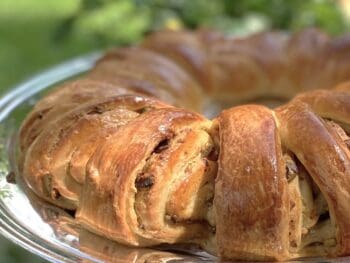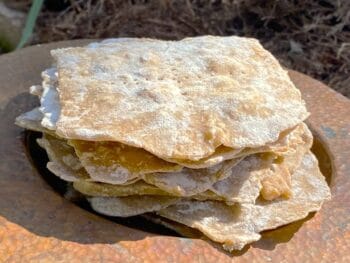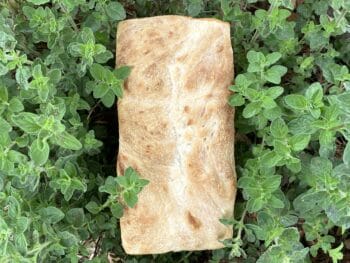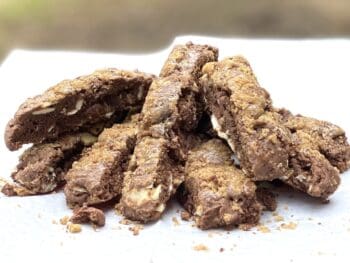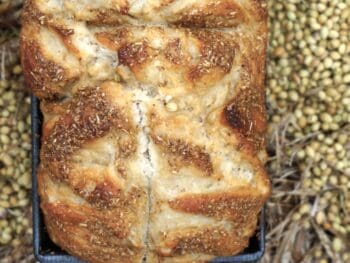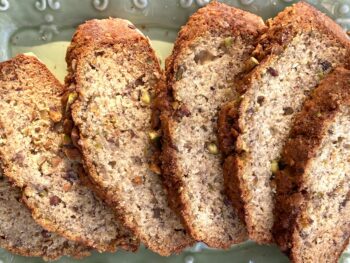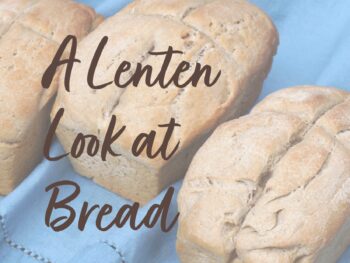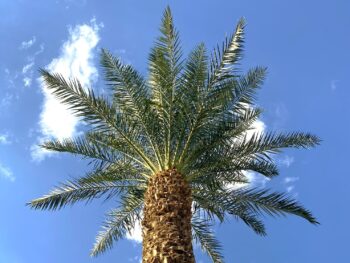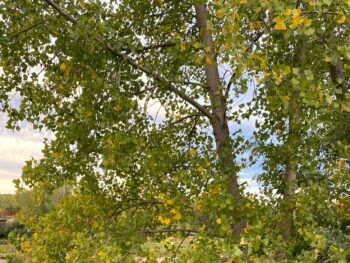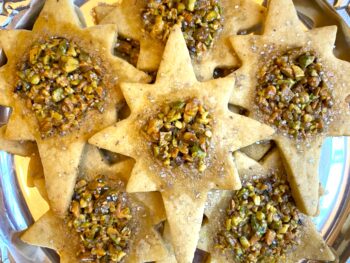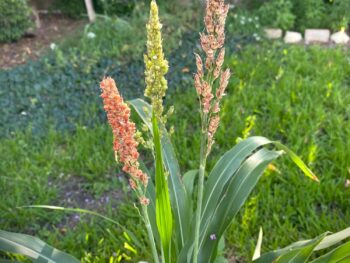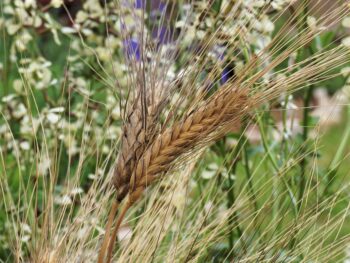If you are ga-ga for the herbal aromas overflowing from your summer garden, then myrtle gelato is for you! Some of us are wildly (or weirdly!) enthralled by the scents of the mint family, for example—mint, rosemary, basil, to name a few—herbs at peak-season growth right now. Yet myrtle, Myrtus communis, a woody shrub in a family all its own, has an aromatic, other-worldly bouquet; it bursts forth with lush leaves, which are crowned with rare and mysterious flavor. Making gelato has become a favorite way to transport this garden joy to delectable encounter: Move over vanilla for a beloved Bible scent! Let us swoon with the psalmist:
Taste and see that the Lord is good. Psalm 34:8 NIV
Myrtle has such a unique aroma and savor— wholesome and subtle, partly balsam-like with notes of nutmeg, gently suggesting sweetness the way rosemary, basil, and fennel do. As its leaves are too thick to enjoy chopped and sprinkled fresh like most herbs, myrtle’s flavor is captured best in a simmer, letting its special oils release into warm, creamy sauces. The gelato recipe below will leave you steeped in delight, hopefully with a hunger for God’s Kingdom, where celebrations of great joy are pictured with such luscious plants.
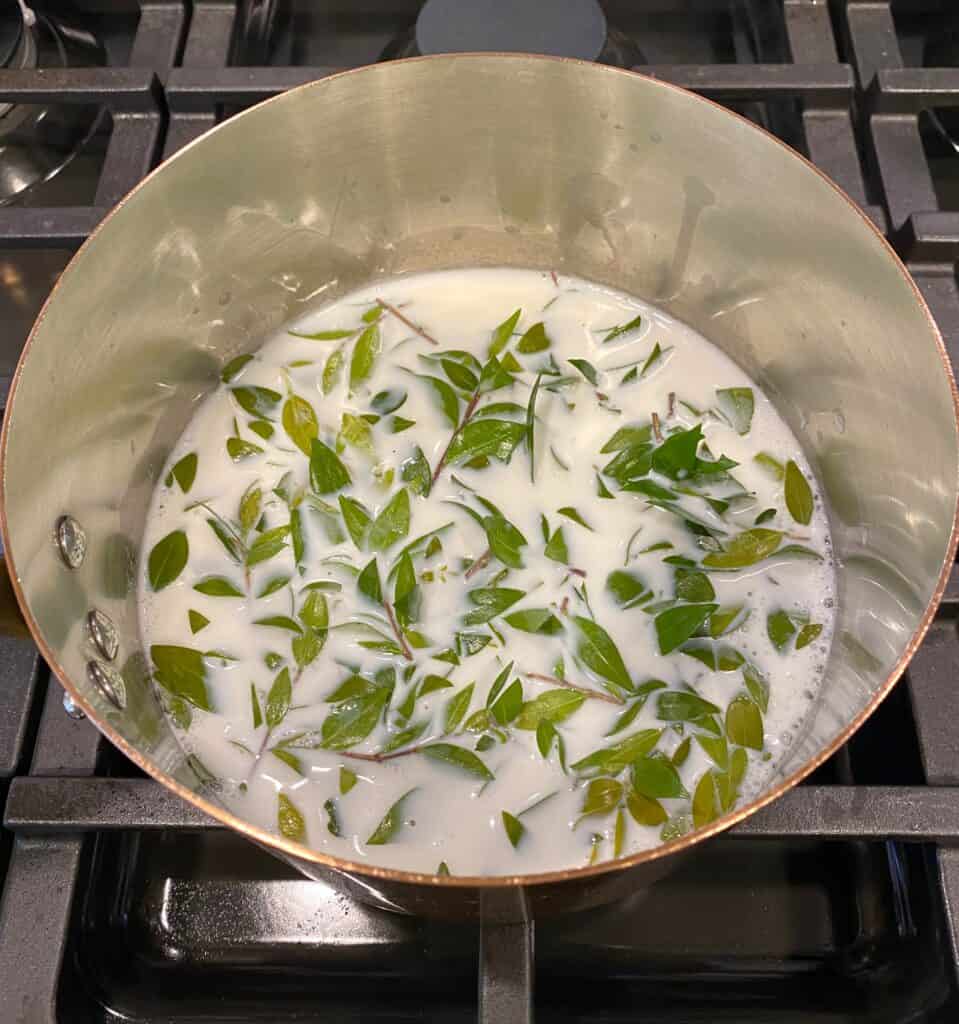
Another Myrtle Moment
We have celebrated myrtle often over the years of Garden in Delight and in both of my books (see below), but I suspected that when I trimmed up my topiaries recently, the Lord would bring us back to myrtle in the Word of God for a fresh view and devotion. O Lord, we have tasted, now what do You want us to see?
Myrtle has several facets in its Biblical symbolism, and one of its most vibrant comes from its place in the celebration of Feast of Tabernacles, Feast of Booths, or Sukkot. The Lord gave instructions for gathering boughs to create sukkahs, temporary shelters (tabernacles or booths) roofed in tree branches.
And you shall take for yourselves on the first day the fruit of beautiful trees, branches of palm trees, the boughs of leafy trees, and willows of the brook; and you shall rejoice before the Lord your God for seven days… You shall dwell in [g]booths for seven days. All who are native Israelites shall dwell in booths, that your generations may know that I made the children of Israel dwell in booths when I brought them out of the land of Egypt: I am the Lord your God.’” Leviticus 23:40, 42-43 NKJV
“Leafy trees” is traditionally taken to be myrtle. The sukkah commemorates the temporary dwelling of each Israelite family as they camped in the desert on the way to their permanent home in the land promised to them, while simultaneously symbolizing our eternal home with the Lord. Setting the table under the sukkah, with family and loved ones gathered to feast, pictures the fellowship and feasting that awaits us with the Lord in His Kingdom, also circling back to the communion of the garden in Eden.
Nehemiah’s Plant List
However, when God’s people returned to their homeland after exile, centuries after the festival program for Sukkot had been established, Nehemiah instructed the freshly reconnected-to-their-roots people with a slightly different species list. Hmmm…it has always puzzled me to have two lists for the same celebration.
So they issued a proclamation, and it went out to everyone in Jerusalem and in every town that people should go into the hills to gather branches from olive trees, wild olive trees, myrtle trees, palm trees—any kind of leafy tree they could find. With these branches they were told to build temporary shelters to house them during the festival, as God’s law declared. Nehemiah 8:15 VOICE
No doubt reasonable speculations and explanations abound to understand why Nehemiah called instead for olive, myrtle, and palm, but, dear gardener, today we are not looking for a standard explanation; we are yearning to see something new…
Olive, Myrtle, & Palm
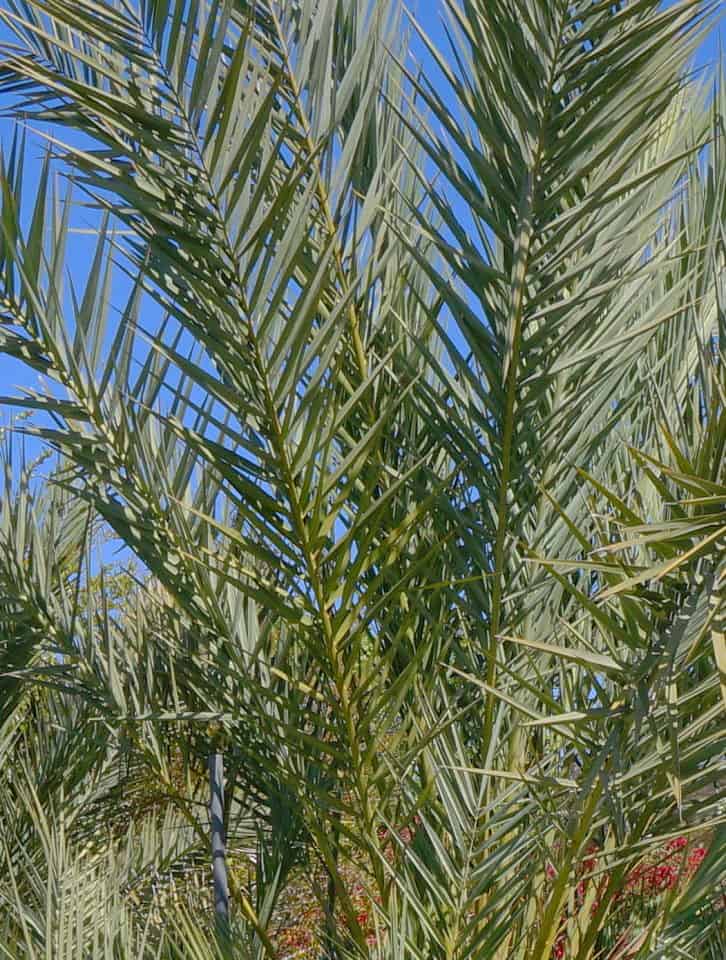
…which has led botanically, albeit a bit circuitously, to Romans 14. Remember with me that over the years of journeying in the plants and gardening of the Bible, we have learned that the palm tree implies righteousness, revealed in the palm branches that people waved at Jesus’ entry to Jerusalem, the arrival of their righteous king (Zechariah 9:9, John 12:13-15).
Likewise, olive trees typically represent God’s peace, pictured especially with the olive leaf in the dove’s beak, a gesture of peaceful resolution to the terrible flood that Noah endured (Genesis 8:11).

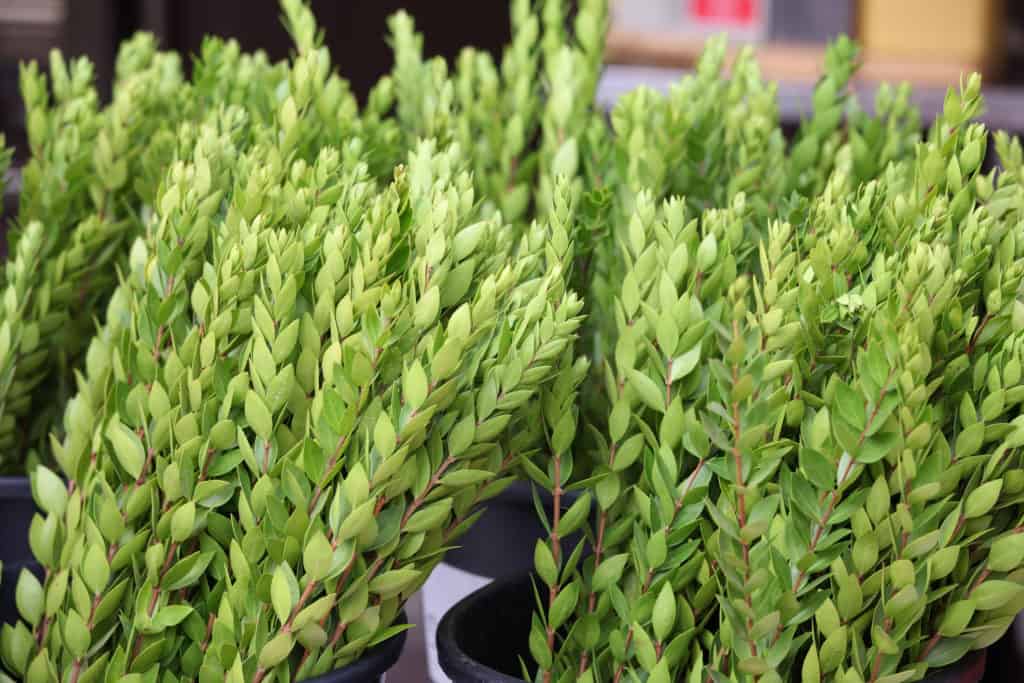
Finally, myrtle signifies joy, showcased especially in Queen Esther’s feast, Purim, joyously celebrating her prayer-victory over evil Haman’s plot, her other name meaning myrtle in Hebrew (Esther 2:7, 9:17-19).
Therefore, olive, myrtle, and palm from Nehemiah’s list can also be a gardener’s expression of peace, joy, and righteousness. And where else do we find these three?
For the kingdom of God is not a matter of rules about food and drink, but it is in the realm of the Holy Spirit, filled with righteousness, peace, and joy. Romans 14:17 TPT
The kingdom of God is not about what a person eats and drinks. But it is about living in a way which is right with God. It is peace. It is joy because a person has the Holy Spirit. Romans 14:17 WE
God’s kingdom isn’t a matter of what you put in your stomach, for goodness’ sake. It’s what God does with your life as he sets it right, puts it together, and completes it with joy. Romans 14:17 The Message
The Words of Romans’ 14:17 land us precisely in alignment with Nehemiah’s list. Except that, funny thing, we are commemorating God’s kingdom in food, myrtle gelato—forgive my absurdity! Let us not contradict Paul’s admonishment, but let our tasty frozen treat point us to the greater move of God’s Kingdom, connecting our crave to savor with a deeper yearning for the Kingdom of God to come near.
“The time has come,” he said. “The kingdom of God has come near. Repent and believe the good news!” Mark 1:15 NIV
Nehemiah’s Leadership
So let’s circle back to Nehemiah’s story; in light of Romans 14, now we can see glimpses of God’s Kingdom reigning in the community. God’s people grappled with rebuilding their community, restoring rubble into fortified walls, even though heckled and mocked by outsiders. How do we know God’s Kingdom was near to them? Witness what Nehemiah declared righteously over his people, and the people’s response in peace and joy, shown in their work ethic and embrace of God’s Word in these key Scriptures:
[Nehemiah] answered, “The God of heaven will give us success. We serve him. So we’ll start rebuilding the walls.” Nehemiah 2:20 NIRV
We returned to building, focused and determined to work as one people. We stacked rock upon rock until one end of the wall met the other and it grew to half of its original height. Nehemiah 4:6 VOICE
After I looked things over, I stood up and said to the nobles, the officials and the rest of the people, “Don’t be afraid of them. Remember the Lord, who is great and awesome, and fight for your families, your sons and your daughters, your wives and your homes.” Nehemiah 4:14 NIV
When the seventh month came and the Israelites had settled in their towns, all the people came together as one in the square before the Water Gate. They told Ezra the teacher of the Law to bring out the Book of the Law of Moses, which the Lord had commanded for Israel… He read it aloud from daybreak till noon as he faced the square before the Water Gate in the presence of the men, women and others who could understand. And all the people listened attentively to the Book of the Law. Nehemiah 7:73-8:3 NIV
So the Levites stilled all the people, saying, Hold your peace, for the day is holy; neither be ye grieved. Nehemiah 8:11 KJV
Then all the people went to eat and drink and to send portions. They had a big, joyful celebration because they understood the words that had been explained to them. Nehemiah 8:12 GW
This historical account under Nehemiah and Ezra’s righteous leadership can inspire us today to turn to God, seeking his peace and joy, and be drawn together in working harmony with our families, communities, and nation, helping us to realize the Kingdom of God is near.
Click here to read Nehemiah 1 – 8
Romans Community
The “as one” cohesion that Nehemiah and his neighbors experienced was the same kind of harmony that Paul was working towards among the Roman believers. While the story of Nehemiah concluded with celebrating the annual Feast of Tabernacles, Paul addressed the ins and outs and dietary guidelines of coming together for daily dinners, weekly sabbath suppers, and new moon meals—or not. Our destiny is to feast with the Lord—by way of Jesus we are welcomed to God’s table.
People will come from the east, west, north, and south and will sit down at the table in the kingdom of God. Luke 13:29 NCV
Welcome with open arms fellow believers who don’t see things the way you do. And don’t jump all over them every time they do or say something you don’t agree with—even when it seems that they are strong on opinions but weak in the faith department. Remember, they have their own history to deal with. Treat them gently. Romans 14:1 The Message
Therefore, let’s keep on pursuing those things that bring peace and that lead to building up one another. Romans 14:19 ISV
Join us, and pursue a life that creates peace and builds up our brothers and sisters. Romans 14:19 VOICE
The matters of what day, frequency, and kind of food, Paul declared, may vary from household to region, yet the eternity of God’s Kingdom is constant. It is fascinating to connect these two parts of Scripture, Nehemiah 1-8 and Romans 14, and see how they reflect each other, underplanted by peace, joy and righteousness—details I would have missed except they are hidden in the horticulture.
Myrtle Gelato Recipe
But back to gelato! If you don’t have a myrtle bush, understood. Try this recipe with other leafy garden herbs…and yes, even vanilla bean.
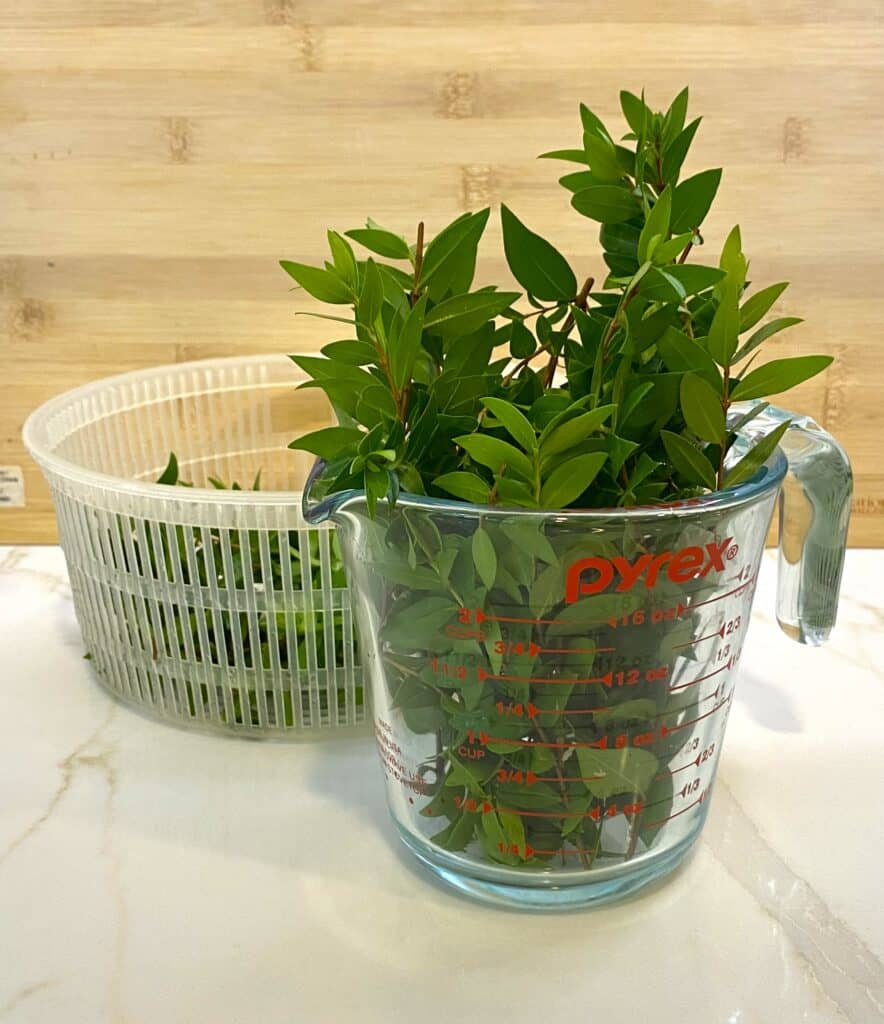
Prepare ice cream maker; freeze the insert overnight or have ice and salt on hand for old-fashioned crank style. Gather and rinse 2 overflowing cups of myrtle leaves. Measure 2 cups of whole milk and place both in a medium saucepan. Bring to just barely boiling, then turn off the heat, cover the pot, and let steep for 30 minutes. Meanwhile, in an electric mixer, beat 5 egg yolks and 3/4 cup sugar for several minutes, until batter thickens and turns pale yellow. Have a second metal mixing bowl and fine sieve handy.
After 30 minutes, remove myrtle leaves from the milk and discard them. Return milk to low heat and bring to a simmer. Next, pour about half of the milk into the mixing bowl with egg yolks and sugar, stirring briskly to temper the eggs and cool off the mixture. Then pour this mixture back into the saucepan, turn up to medium heat, and stir constantly to form a custard; that is, let the mixture thicken until it coats the back of a spoon, about 10 minutes.
Once thickened, remove from heat and add 1 cup of heavy whipping cream. Stir thoroughly and pour through the sieve into the handy second metal mixing bowl. This will help break up any bits of cooked egg, ensure a smooth texture, and strain out any stray plant parts. Use a spatula as needed to press the mixture through the sieve into the bowl. Put the bowl into the refrigerator for about 10 minutes to chill. Then pour mixture into your ice cream maker and follow manufacturer directions. Enjoy!
Recipe inspired by and adapted from Martha Stewart Living Magazine, June-July 1994 issue
Closing Prayer
O Lord, thank you for the blessings you put in our lives, especially the adventure of getting to know you from a gardener’s point of view. Now that I know olive, myrtle, and palm, my eyes (and nose!) are open to your righteousness, joy, and peace at work, a move of Your Holy Spirit to be among us and draw us to your Kingdom. First and foremost, let me understand and adore Your Word as Nehemiah’s neighbors did all those years ago. Fresh understanding is mine for the asking, so I ask! (James, 1:5). Show me how to put Your Word into practice, so I may build up Your people as Your Kingdom draws near. Thank you, Lord, for welcoming me to Your feast! In Jesus’ Name, Amen.
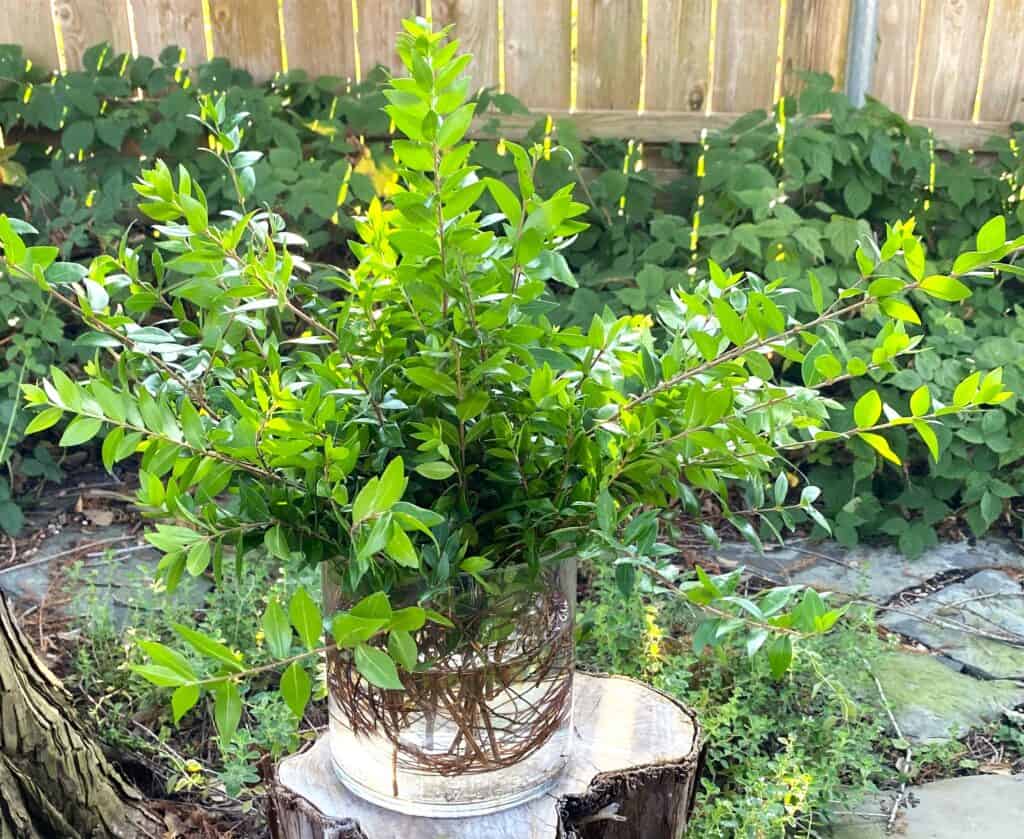
Let’s go into God’s dwelling place, and bow down and worship before him. Arise, O Lord, and enter your resting place, both you and the ark of your glorious strength! May your priests wear the robes of righteousness, and let all your godly lovers sing for joy! Psalm 132:7-9 TPT


Read more about myrtle in these Devotions Blogs: A Myrtle Moment clips this evergreen shrub into topiary trees; Where Can I Find Bible Plants in Pasadena gives glimpses of dwarf myrtle in the landscape; bake with myrtle’s sweet scent in A Citron Fruit Celebration; behold myrtle’s place in bridal bouquets in Myrtle, A Growing Success; study in-depth myrtle’s role in the Feast of Tabernacles with Nehemiah’s Call.
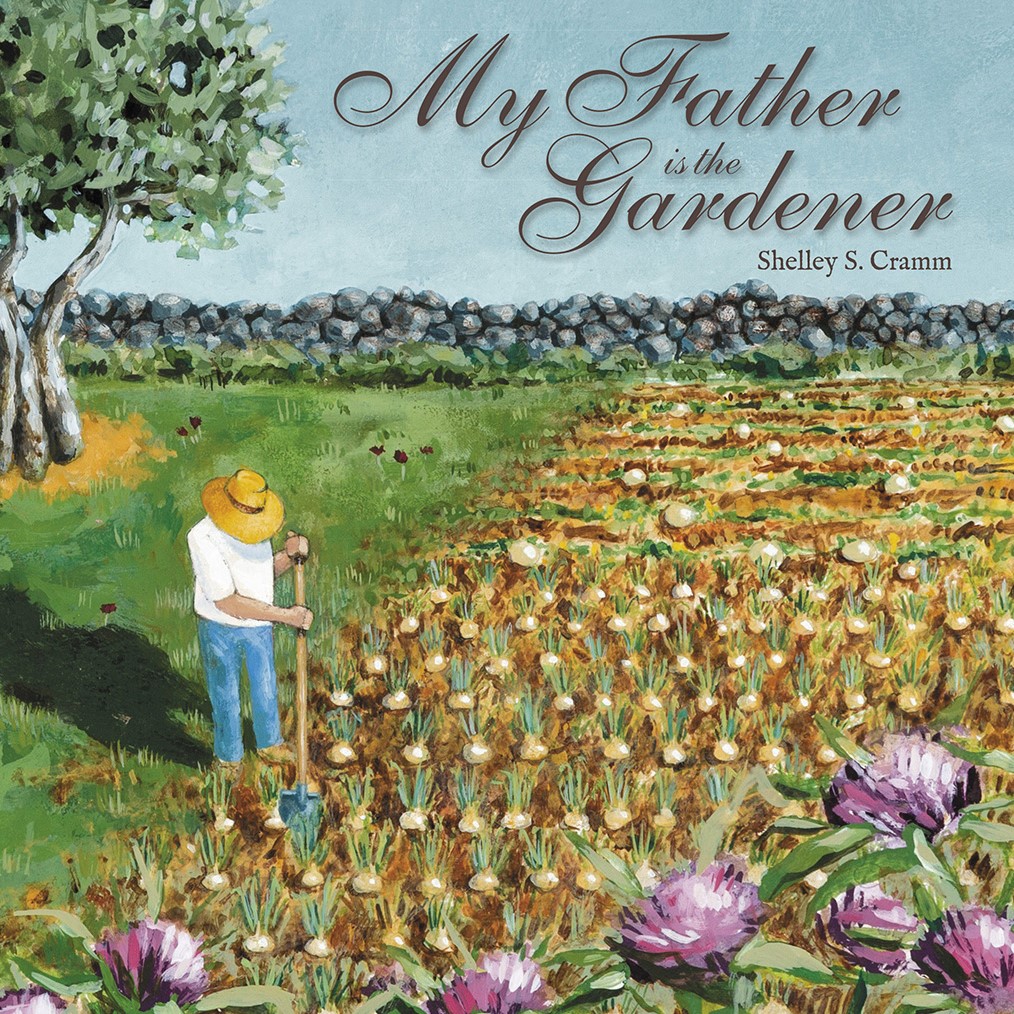
Read more about myrtle in chapter 14 of My Father is the Gardener, Devotions in Botany and Gardening of the Bible, link here to for where to buy the book
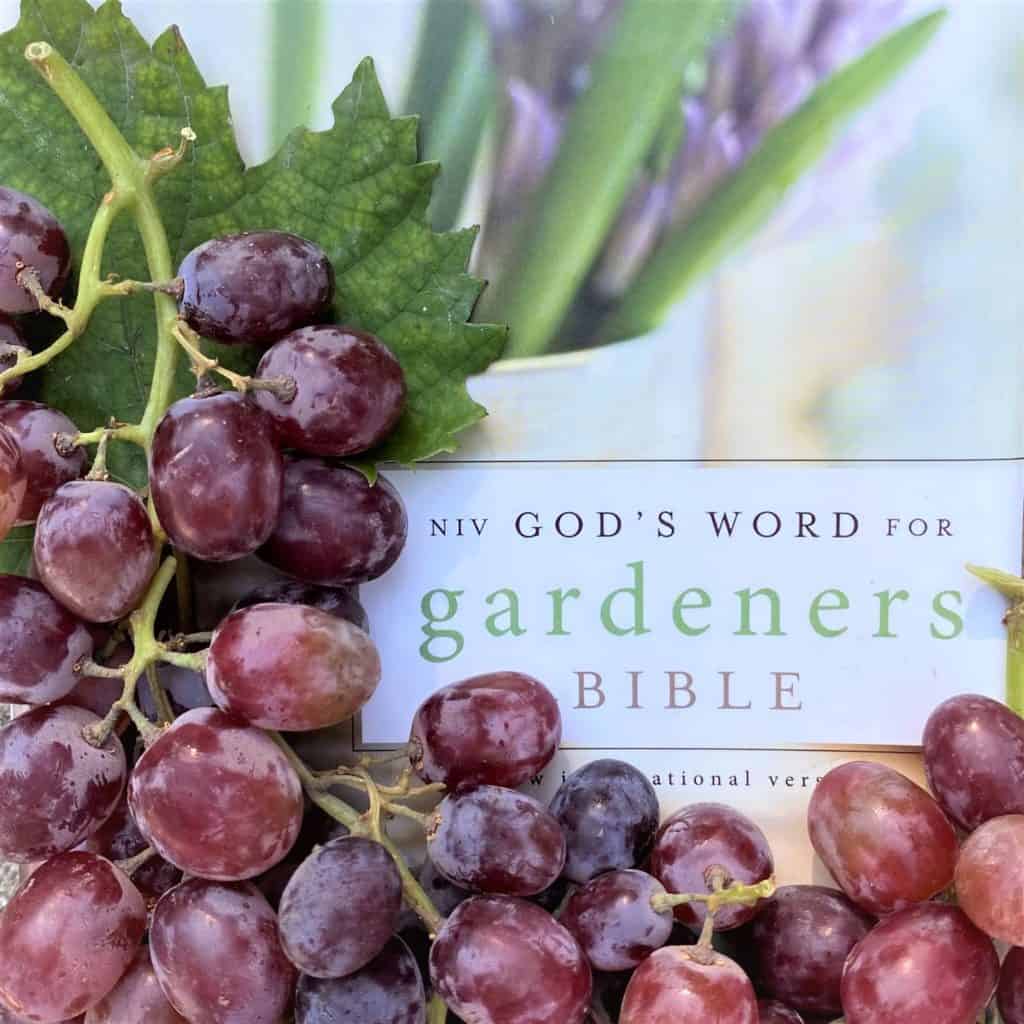
Myrtle is celebrated in God’s Word for Gardeners Bible beginning on page a-30
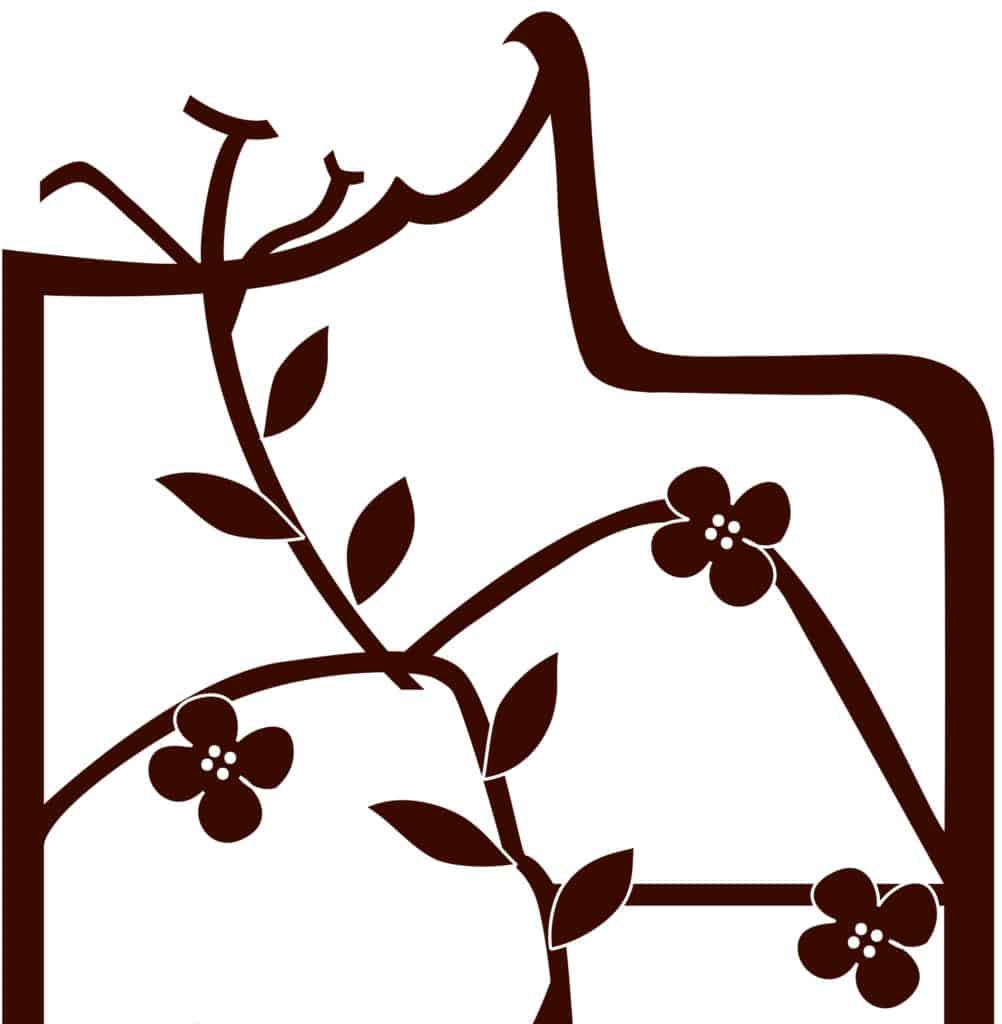
Find myrtle in the Plant Guide for enjoying in your own garden
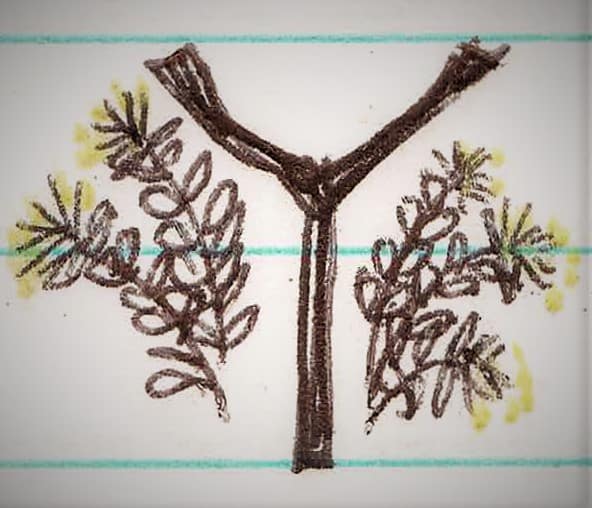
Learn more about myrtle in rhyme and meter in Y is for mYrtle, from the A-to-Z Primer of Plants from God’s Word. Also enjoy D is for Date Palm and O is for Olive Tree
Photo Credits: ©Shelley S. Cramm
GW denotes Scripture quotations taken from GOD’S WORD®, © 1995, 2003, 2013, 2014, 2019, 2020 by God’s Word to the Nations Mission Society. Used by permission.
ISV denotes Scripture quotations from The Holy Bible: International Standard Version. Release 2.0, Build 2015.02.09. Copyright © 1995-2014 by ISV Foundation. ALL RIGHTS RESERVED INTERNATIONALLY. Used by permission of Davidson Press, LLC.
KJV denotes Scriptures taken from The Holy Bible, King James Version published in 1611, authorized by King James I of England, which is public domain in the United States.
NCV denotes Scripture quotations taken from the New Century Version®. Copyright © 2005 by Thomas Nelson. Used by permission. All rights reserved.
NIRV denotes Scripture quotations taken from the Holy Bible, New International Reader’s Version®, NIrV®, Copyright © 1995, 1996, 1998, 2014 by Biblica, Inc.® Used by permission of Zondervan. All rights reserved worldwide. www.zondervan.com The “NIrV” and “New International Reader’s Version” are trademarks registered in the United States Patent and Trademark Office by Biblica, Inc.®
NIV denotes Scripture quotations taken from the Holy Bible, New International Version®, NIV®. Copyright © 1973, 1978, 1984, 2011 by Biblica, Inc.® Used by permission of Zondervan. All rights reserved worldwide. www.zondervan.com The “NIV” and “New International Version” are trademarks registered in the United States Patent and Trademark Office by Biblica, Inc.®
The Message denotes Scripture quotations taken from THE MESSAGE, copyright © 1993, 2002, 2018 by Eugene H. Peterson. Used by permission of NavPress. All rights reserved. Represented by Tyndale House Publishers, a Division of Tyndale House Ministries.
TPT denotes Scripture quotations taken from The Passion Translation®. Copyright © 2017, 2018, 2020 by Passion & Fire Ministries, Inc. Used by permission. All rights reserved. ThePassionTranslation.com
VOICE denotes Scripture quotations taken from The Voice™. Copyright © 2012 by Ecclesia Bible Society. Used by permission. All rights reserved.
WE denotes Scripture quotations taken from THE JESUS BOOK – The Bible in Worldwide English. © 1969, 1971, 1996, 1998 by SOON Educational Publications, Derby DE65 6BN, UK. Used by permission.


